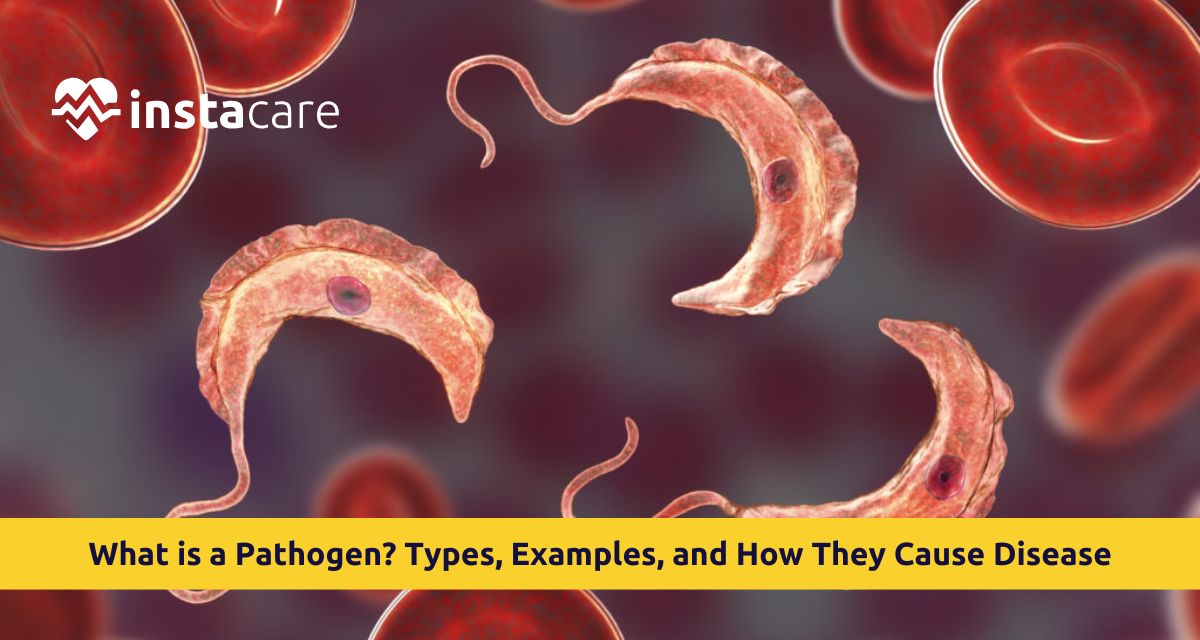Information about the pathogens is of prime significance in maintaining public health, prevention of pathogen transmission, and the success of cure. From viruses to bacteria, from fungi to parasites, all the pathogens are diversified and infect in diversified manners. The article gives a pictorial insight into their definition, classification, causation of disease, prevention and treatment, and examples of pathogens.
What is a Pathogen?
A biological agent or microorganism capable of causing infection and disease in the host is called a pathogen. They can be microscopic and minute such as viruses and bacteria or enormous such as parasitic worms.
There's confusion since difference between pathogen and germ are not precisely synonymous. "Germ" is simply colloquial usage for microorganisms, disease-causing or otherwise. A pathogen definition biology is disease-causing in the strict sense, a disease-causing microorganism. Not all paths are germs, but all pathogens are germs in the disease-causing context.
Pathogens get in via a variety of ways, eating, breathing, touching, biting, or by infecting after coming into contact with the surface of a germ-covered surface. They need to grow, avoid the immune system, and multiply themselves all around the body.
Types of Pathogens
Pathogens exist in an infinite variety of forms depending on their shape, biology, and mode of infection and pathogenesis in us. These are types of pathogens of the key ones:
Bacteria as Pathogens
bacteria as pathogens are made up of individual prokaryotic cells. Bacteria are, in general, beneficial, they assist digestion, vitamin production, and the breakdown of wastes, but disease-causing and pathogenic. Pathogenic bacteria are:
- Mycobacterium tuberculosis – tuberculosis
- Streptococcus pyogenes – strep throat
- Escherichia coli (some) – food poisoning
Pathogenic bacteria would be toxigenic or tissue destructive. Pathogenic bacteria are transmitted by dirty food, water, air, or medical contact.
Viruses as Pathogens
viruses as pathogens are protein-wrapped non-cellular bodies of genetic material (DNA or RNA). They do not make copies of themselves, they infect a cell and use its machinery to be able to create new copies of themselves. Some viruses that make us sick are:
- Influenza virus – the flu
- SARS-CoV-2 – COVID-19
- Human Immunodeficiency Virus (HIV) – AIDS
Viral infections are expressed in a latent way for years and are acute, or chronic, or latent and chronic and have an intense immune system response to pathogens with signs and symptoms, or occult.
Pathogenic Fungi
Fungi comprise the eukaryotic microbes and yeasts, molds, and mushrooms. Fungi are mostly nonpathogenic, but some fungi as pathogens infect immunocompromised patients. Some of the pathogenic fungi are:
- Candida albicans – infects as yeast
- Aspergillus species – infects respiratory tract
- Cryptococcus neoformans – infects meningitis
Fungi infect internal organs, nails, skin, or lungs. Fungi are cultivated under warm, humid environments.
Parasites as Pathogens
Parasites are organisms that reside inside or on a host and parasitize the host in an effort to survive. parasites as pathogens exist as microscopic (protozoa) or macroscopic (worms). Some of the parasites that are known to cause disease are:
- Plasmodium species – malaria
- Giardia lamblia – giardiasis
- Taenia solium – pork tapeworm disease
Pathogens also transmit by the method of infected food, water, or soil, or insect sting.
How Pathogens Cause Disease
There are some steps involved in the process through which diseases get caused by pathogens:
- Entry into Host: The host is entered by the body using the mouth, nostrils, cutaneous skin, eyes, genitals, or insect vectors like mosquitoes.
- Attachment to Host Cells: Most microorganisms possess host tissue molecules to attach onto so they can't be washed off by body fluids.
- Invading and Multiplying: Attached microorganisms infect cells or tissue and reproduce rapidly.
- Immune System Evasion: Pathogens evolve evasion strategies such as camouflage in immune cells, modification of surface proteins, or degradation of immune signaling in attempts at concealment.
- Host Tissue Damage: Damage can be direct (e.g., toxin that kills) or indirect (e.g., inflammation due to an immune attack).
- Spread to New Hosts: how pathogens spread? Fastidious pathogens are not leaving anything to chance in spreading, sneezing and coughing, ingested on the food that is on it, body fluids, or bug stings.
Prevention of Disease Related to Pathogens
Better not to cure than to cure, and for pathogens, saves lives too. Prevention is
- Good Hygiene Practice – Wash hands often, especially before eating and after using the restroom, to prevent infection.
- Safe Food and Water – Safe food handling, not drinking water from an infected source, and safe food storage prevents food poisoning.
- Vaccinations – Immunization instructs the immune system to combat some pathogens.
- Vector Control – Insect repellents, bed nets, and environmental sanitation to prevent disease-spreading insects such as mosquitoes.
- Isolation and Quarantine – Separation of the ill in a bid to minimize infectious disease spread.
Mass education campaigns, access to clean water, and sanitation prevent a lot of infectious diseases caused by pathogens spread.
Various Treatment Modalities
Pathogen-class-and-infection-grade-oriented treatment is given for disease caused by pathogens:
Bacterial infection
Received antibiotics against bacterial structure or function. However, antibiotic resistance grows, and proper prescription and administration are a must.
Viral infection
Received antiviral medication that inhibits replication of the virus. Prevention through immunization is of utmost significance. Specific viral infections, such as the
common cold, are mainly treated symptomatically.
Fungal infections
Treated with antifungal medication against the fungal cell wall or cell membrane. Treated locally or systemically based on the severity.
Parasitic Infections
Treated with antiparasitic medication based on the parasite. Prevention through hygiene, sanitation, and control of insects is essential.
Supportive therapy, i.e., bed rest, pain control, and fluid, usually follows some therapy.
Conclusion
Pathogens are highly infectious disease-producing pathogenic microorganisms that drive the destiny of human civilization under the shelter of pandemics and epidemics. Whether pathogens are viruses or bacteria, parasites or fungi, they all attack and infect the body by a particular mode. To be aware of pathogens enables us to unify preventive, curative, and control measures.
Having experienced proper hygiene, immunization, correct handling of food in correct manners, and periodic visits to the doctor, all of these amount to overreaction in evading the pathogenic action. Although the body immune system provides a good defense line, an educated and smart counterattack is what lends the combat more strength against such minute invaders.
Please book an appointment with the
best General Physician in Lahore, Karachi, Islamabad, and all major cities of Pakistan through
InstaCare, or call our helpline at 03171777509 to find the verified doctor for your disease.

